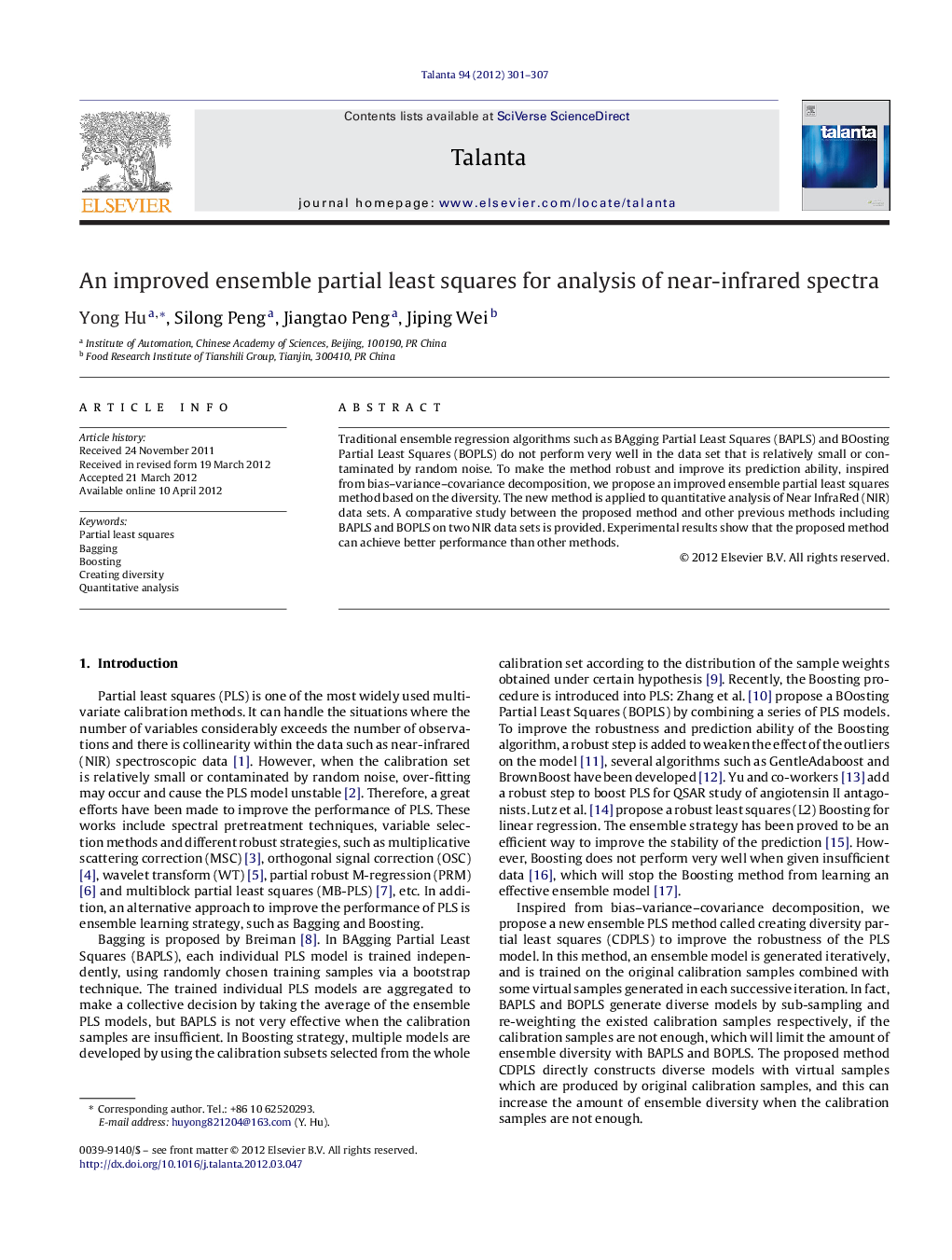| Article ID | Journal | Published Year | Pages | File Type |
|---|---|---|---|---|
| 1245652 | Talanta | 2012 | 7 Pages |
Traditional ensemble regression algorithms such as BAgging Partial Least Squares (BAPLS) and BOosting Partial Least Squares (BOPLS) do not perform very well in the data set that is relatively small or contaminated by random noise. To make the method robust and improve its prediction ability, inspired from bias–variance–covariance decomposition, we propose an improved ensemble partial least squares method based on the diversity. The new method is applied to quantitative analysis of Near InfraRed (NIR) data sets. A comparative study between the proposed method and other previous methods including BAPLS and BOPLS on two NIR data sets is provided. Experimental results show that the proposed method can achieve better performance than other methods.
► The new method is based on the bias–variance–covariance decomposition. ► The new method constructs diverse models with virtual samples. ► The new method improves the accuracy of the PLS model. ► The new method improves the stability of the PLS model.
